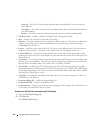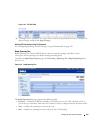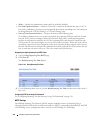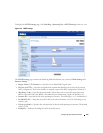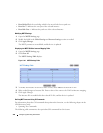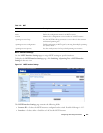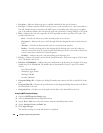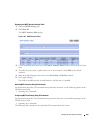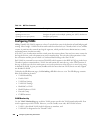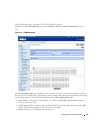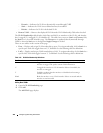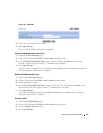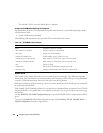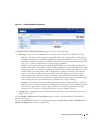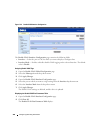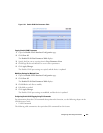
360 Configuring Switching Information
Configuring VLANs
Adding Virtual LAN (VLAN) support to a Layer 2 switch offers some of the benefits of both bridging and
routing. Like a bridge, a VLAN switch forwards traffic based on the Layer 2 header, which is fast, and like
a router, it partitions the network into logical segments, which provides better administration, security
and management of multicast traffic.
A VLAN is a set of end stations and the switch ports that connect them. You may have many reasons for
the logical division, such as department or project membership. The only physical requirement is that
the end station and the port to which it is connected both belong to the same VLAN.
Each VLAN in a network has an associated VLAN ID, which appears in the IEEE 802.1Q tag in the Layer
2 header of packets transmitted on a VLAN. An end station may omit the tag, or the VLAN portion of
the tag, in which case the first switch port to receive the packet may either reject it or insert a tag using
its default VLAN ID. A given port may handle traffic for more than one VLAN, but it can only support
one default VLAN ID.
To display the VLAN menu page, click Switching
→
VLAN in the tree view. This VLAN page contains
links to the following features:
• VLAN Membership
• Double VLAN
• VLAN Port Settings
• VLAN LAG Settings
•Bind MAC to VLAN
•Bind IP Subnet to VLAN
•Protocol Group
• GVRP Parameters
VLAN Membership
Use the VLAN Membership page to define VLAN groups stored in the VLAN membership table. Your
switch supports up to 4094 VLANs. However, you can actually create only 4092 VLANs because:
• VLAN 1 is the default VLAN of which all ports are members, and
• VLAN 4095 is designated as the "Discard VLAN."
Table 7-24. MST Port Commands
CLI Command Description
spanning-tree mst 0 external-cost Sets the external cost for the common spanning tree.
spanning-tree mst cost Configure the path cost for multiple spanning tree (MST) calculations.
spanning-tree mst port-priority Configures port priority.



